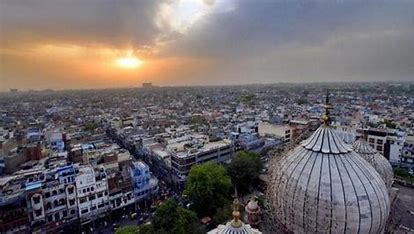Chandni Chowk, one of Delhi’s busiest markets and a popular tourist hub, has emerged as a rare clean-air zone amid the city’s persistent pollution woes. For two consecutive days, the area recorded an Air Quality Index (AQI) significantly lower than most parts of Delhi.
Pollution Levels in Chandni Chowk
- On Monday, the AQI stood at 186 (moderate) at 8 AM, according to the Indian Institute of Tropical Meteorology (IITM).
- On Tuesday, the AQI oscillated between 250-270 during the day, falling under the “poor” category.
In contrast, other parts of Delhi recorded AQI levels in the “very poor” category, with Shadipur, Anand Vihar, and Mundka reaching levels above 310.
Key Factors Behind the Improvement
Non-Motorized Zone Policy
Chandni Chowk was designated as a non-motorized zone in 2021. According to the policy:
- No motor vehicles are allowed on the main Chandni Chowk road between Red Fort and Fatehpuri Mosque from 9 AM to 9 PM.
- Cycle rickshaws are the primary mode of transport, with exceptions made for emergency vehicles and essential goods transport.
Curbing High-Emission Vehicles
The ban on BS3 and BS4 vehicles, known for higher emissions, has further reduced pollution levels in the area.
Expert Insights
- Traffic Restrictions Are Key: Dr. Sachin Ghude from IITM stated, “This is the best example of how creating a non-motorized zone can improve air quality.”
- Long-Term Outlook: Dr. MP George, a former scientist at Delhi Pollution Control Committee, emphasized the need for a consistent downward trend to declare any lasting improvement.
Delhi’s Broader Pollution Challenges
- A study by the Centre for Science and Environment revealed that 51.5% of Delhi’s pollution stems from transport and vehicular emissions.
- While Chandni Chowk shows promise, collective measures across the city are essential for significant change.












